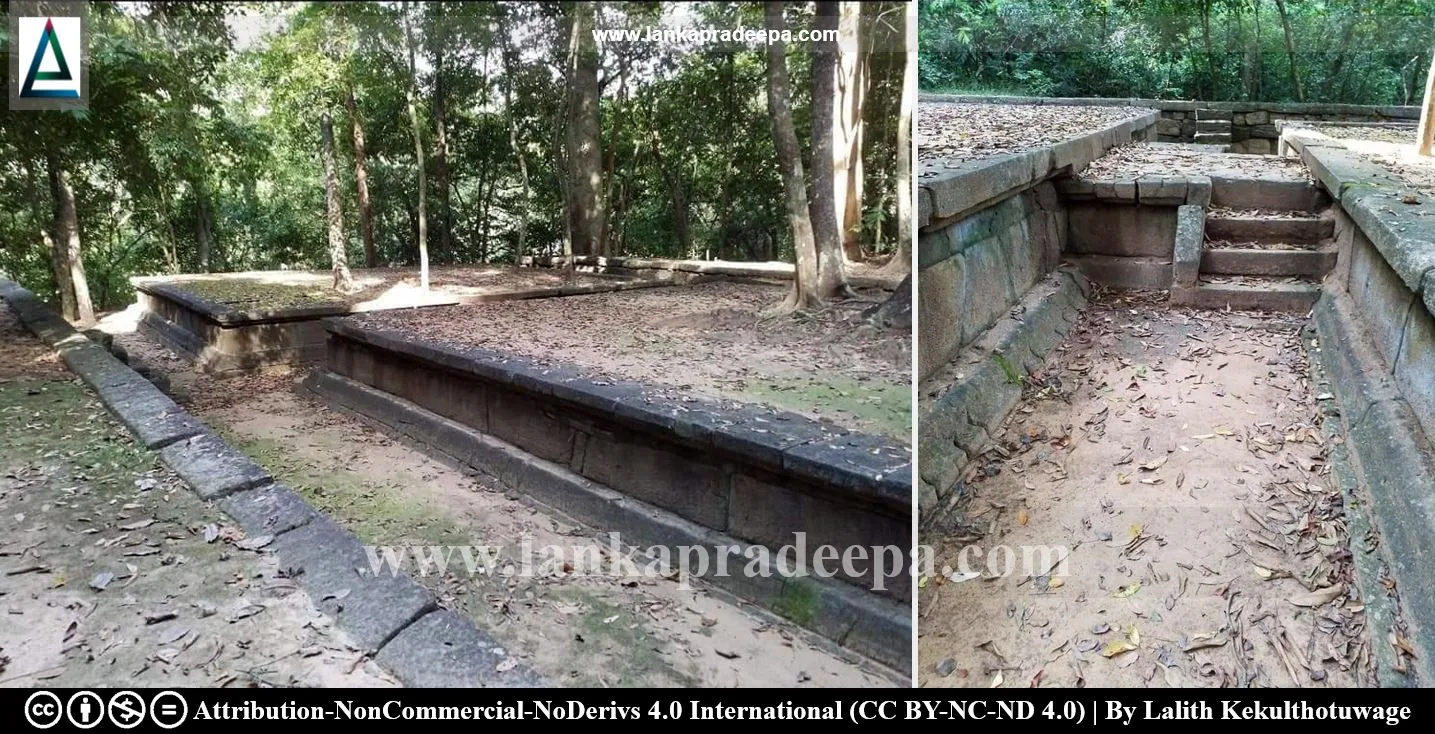
|
Gurulupotha Archaeological Site |
Gurulupotha Archaeological Site, also known as Gurulupotha Sita Kotuwa or Gurulupotha Padhanaghara Piriven Viharaya (Sinhala: ගුරුළුපොත පුරාවිද්යා ස්ථානය/ ගුරුළුපොත සීතා කොටුව/ ගුරුළුපොත පධානඝර පිරිවෙන් විහාරය), is situated on the wayside of the Kandy-Mahiyangana road near the 18 hairpin bend in Kandy District, Sri Lanka.
History
The site consists of the ruins of the 8-10 centuries A.D. and an ancient Padhanaghara Monastery complex (Senanayaka, 2018).
Padhanaghara Monasteries
Padhanaghara, also known as Patanagala or Piyangala, is a special type of monastery built for the Bhikkhus (Buddhist monks) who devoted themselves to meditation involving minimum comforts. They are usually constructed in places situated outside the main areas of monastic and secular buildings. During the latter part of the Anuradhapura Period, Padhanagharas became popular and developed into large-scale complexes. Examples of this type of monasteries are found in the places such as Arankele, Ritigala, Nuvaragalkanda, Veherabendigala, and Western Monasteries etc. (Bandaranayake, 1990).
A Padhanaghara is often built at a site with bedrock almost at the surface or at a shallow depth. The monastery design usually follows a typical plan with a twin structure (two/double-platform) made out of dressed stones, surrounded by a shallow artificial moat. The two platforms are linked to each other by a large monolithic stone slab/bridge spanning across the shallow moat in between.
Is Gurulupotha a place related to Ramayana?
Without any archaeological or historical evidence, this archaeological site is presently promoted by some locals and tourist agencies as a Hindu place related to Rama and Sita, two mythical figures depicted in the Indian epic Ramayanaya. According to them, Gurulupota is the first place where Sita was kept in captivity after her abduction by Ravana (Abeyawardana, 2004). It is said that Sita was given accommodations at the Palace of Mandodhari located in this place but Ravana had to bring her to Asoka Vanam later due to her reluctance to the offers and luxuries here.
However, the authenticity of the Ramayanaya is controversial and hence it is today dismissed as a complete myth by Sri Lankan scholars (JRASSL, 2014).


Related Posts
Read Also
References
Books, Journal Articles
1) Abeyawardana, H.A.P., 2004. Heritage of Kandurata: Major natural, cultural and historic sites. Colombo: The Central Bank of Sri Lanka. pp.116-117.
2) Bandaranayake, S., 1990. The architecture of the Anuradhapura Period 543 B.C.-800 A.D. [Wijesekara, N. (Editor in chief)]. Archaeological Department centenary (1890-1990): Commemorative series: Volume III: Architecture. Department of Archaeology (Sri Lanka). pp.22-24.
3) JRASSL, 2014. Journal of the Royal Asiatic Society of Sri Lanka New Series, Vol. 59, No. 2, Special Issue on the Ramayana (2014). https://www.jstor.org/stable/i40203619. pp.1-112.
4) Senanayaka, P., 2018. Senkadagala Mahanuwara pradeshaye peranima Bauddha Vihara Arama (In Sinhala). Samodhana, The Journal of Faculty of Social Sciences and Humanities. Vol.7 (1). pp.55-83.
Location Map
Dynamic Google Map
Attribution
To Whom
LankaPradeepa.com extends its gratitude to Mr Lalith Kekulthotuwage and Ms Malsha M Ranasinghe for providing the necessary photographs required for this article. All the photos are published here with the permission of the authors.

